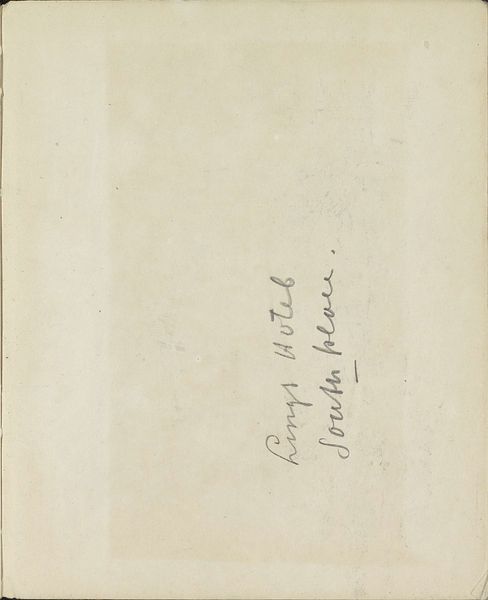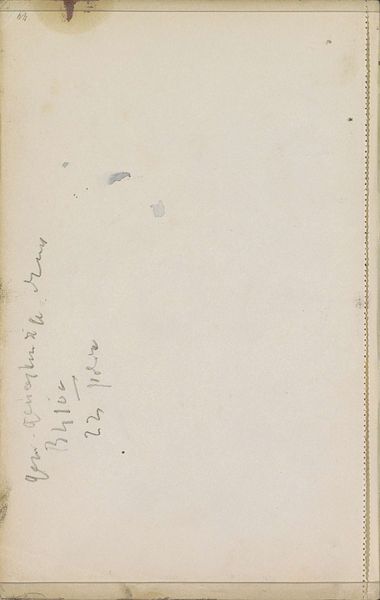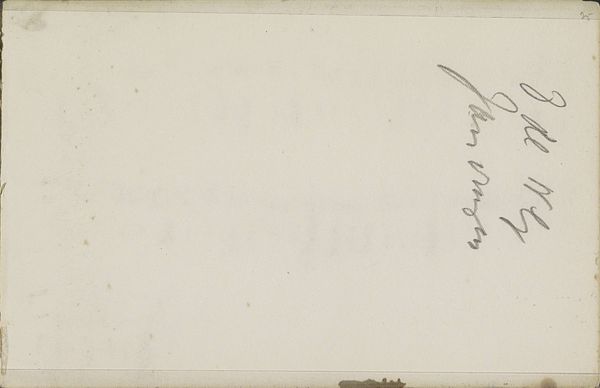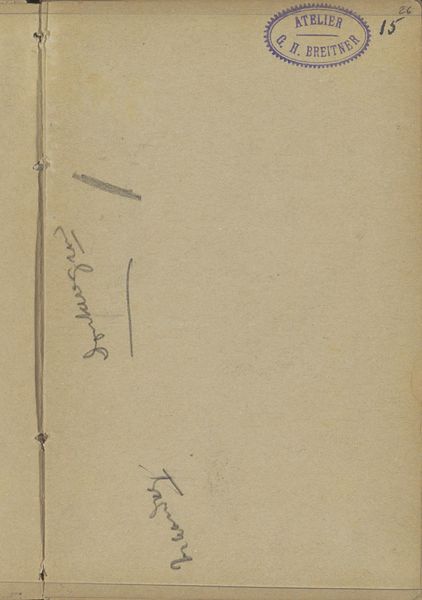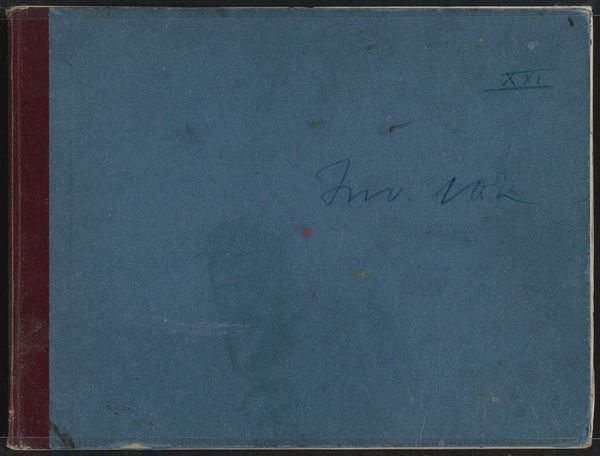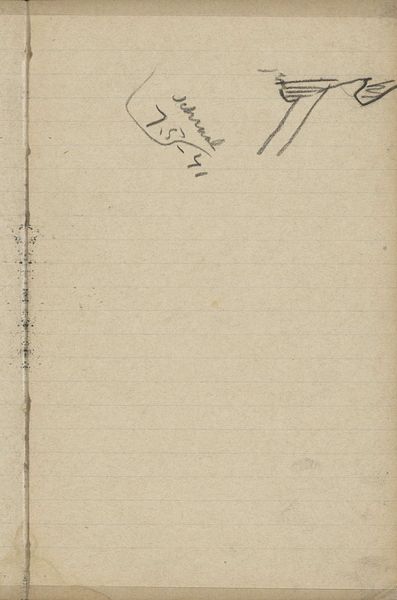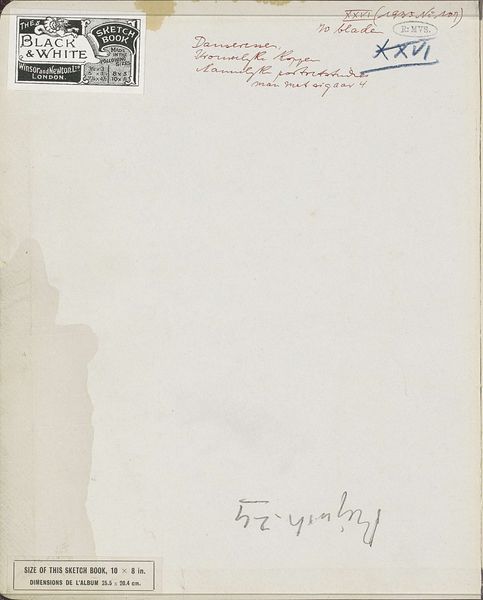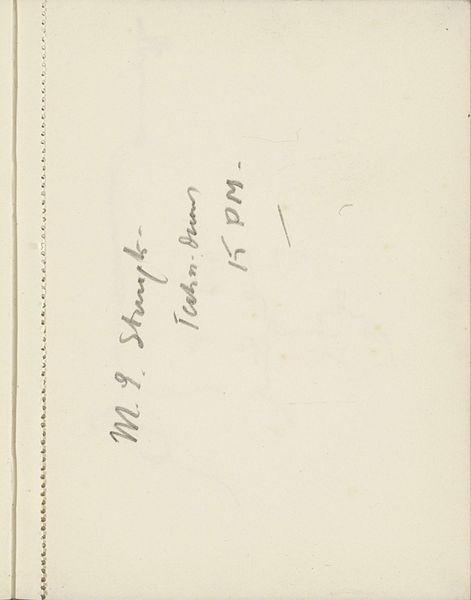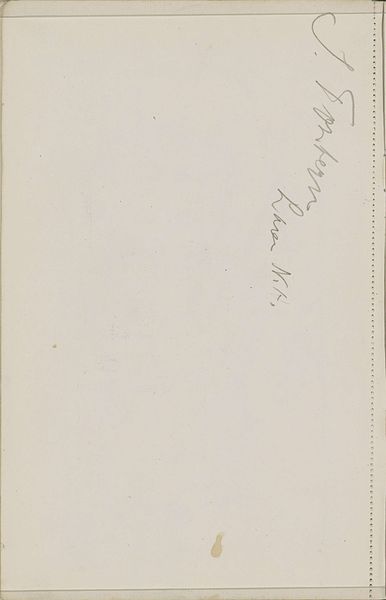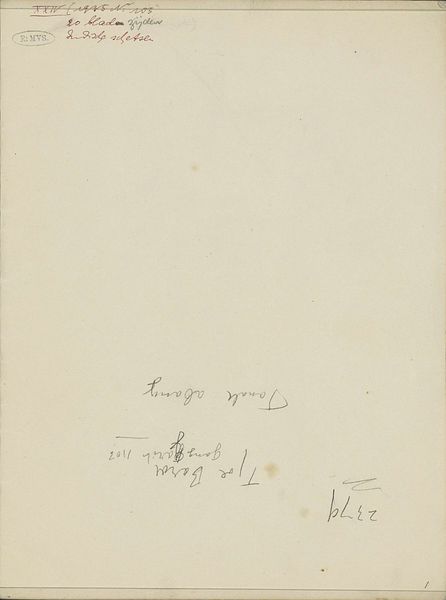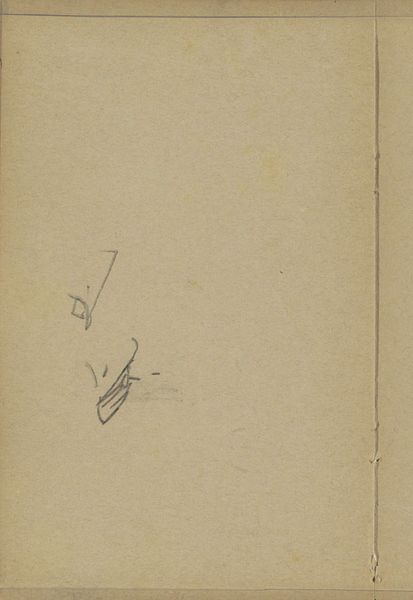
drawing, paper, ink
#
portrait
#
drawing
#
dutch-golden-age
#
paper
#
ink
Dimensions: height 261 mm, width 193 mm, thickness 2 mm, width 383 mm
Copyright: Rijks Museum: Open Domain
Curator: Welcome. We are standing before a sketchbook by Isaac Israels, active between 1875 and 1934. It is simply titled "Schetsboek XXIV met 10 bladen," or "Sketchbook XXIV with 10 sheets." Editor: The dominant hue, a soft muted purple, immediately sets a subdued and rather contemplative tone. There’s a stark contrast between the dark cover and the fainter blue ink of what looks like handwritten notes, it is visually intriguing despite its apparent simplicity. Curator: Israels came from an artistic family, so his talent was fostered early on, with significant social connections in the Hague. This particular sketchbook may reflect that context; informal drawings were quite common, as the sketchbooks themselves had a specific social currency and function. Editor: Absolutely, there is a quiet beauty in the rough quality. What strikes me, given the texture of the paper and visible imperfections, is a refreshing look into the unfiltered artistic process—it emphasizes process over perfect form. Curator: Yes, sketchbooks provide invaluable insights into artistic training and influences. It can give clues about a work’s setting: was the work completed inside, outside, in which type of setting? Where was the work created and viewed? How did those locations affect or not affect the creation and viewership of the artwork? Editor: Focusing solely on form here for a moment, I find the handwriting adds another layer. Its curving lines are aesthetically beautiful, complementing the geometric book edges and rectangular structure and contributing to the overall appeal. The script seems an addition that turns the book from a repository into something more like a personalized object. Curator: And that act of personal inscription is vital for the social implications! These notebooks traveled widely across studio spaces and urban cafes, as artworks that gained popularity due to a number of institutional trends related to museums. Editor: I must say, viewing it has offered a fresh perspective, really enhancing my understanding of a raw artistic process. Curator: I wholeheartedly agree; seeing this pushes us to think deeply about how context informs art historical importance beyond traditional paintings.
Comments
No comments
Be the first to comment and join the conversation on the ultimate creative platform.
